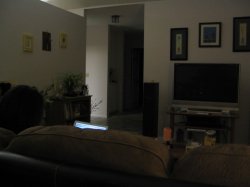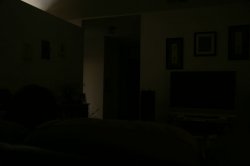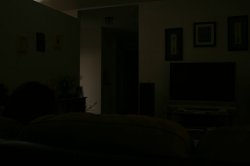Title says it all. I'm struggling to understand why my tiny Canon Powershot lets more light in than my Digital Rebel XTi. Below are some shots taken with my equipment. All shots were taken in Time Value mode at ISO100, 1/8 sec., and no flash.
First shot: Canon Powershot A70. f=5.41mm, f/2.8. This shot resembles room lighting.
Second shot: Canon Digital Rebel XTi with 17-85 IS. f=24mm, f/4.0.
Third shot: Canon Digital Rebel XTi with 18-55 kit lens. f=24mm, f/3.5.
I can't understand why the dSLR shots are so dark when they should be letting roughly 12 times the light in that the Powershot does. Let's do some math.
Powershot: pi*[(5.42/2)/2.8]^2 = 2.9.
Rebel XTi w/ kit lens: pi*[(24/2)/3.5]^2 = 37.
37/2.9=12.6 times the light
Can someone please explain?
First shot: Canon Powershot A70. f=5.41mm, f/2.8. This shot resembles room lighting.
Second shot: Canon Digital Rebel XTi with 17-85 IS. f=24mm, f/4.0.
Third shot: Canon Digital Rebel XTi with 18-55 kit lens. f=24mm, f/3.5.
I can't understand why the dSLR shots are so dark when they should be letting roughly 12 times the light in that the Powershot does. Let's do some math.
Powershot: pi*[(5.42/2)/2.8]^2 = 2.9.
Rebel XTi w/ kit lens: pi*[(24/2)/3.5]^2 = 37.
37/2.9=12.6 times the light
Can someone please explain?





